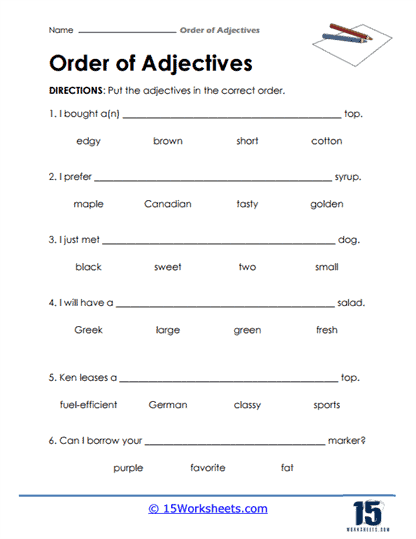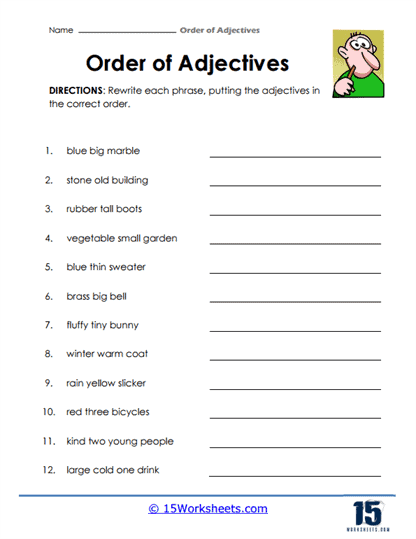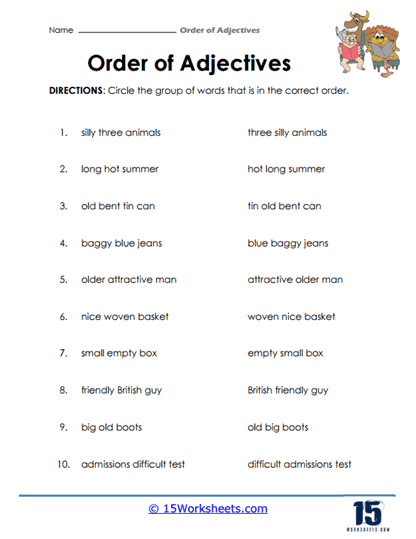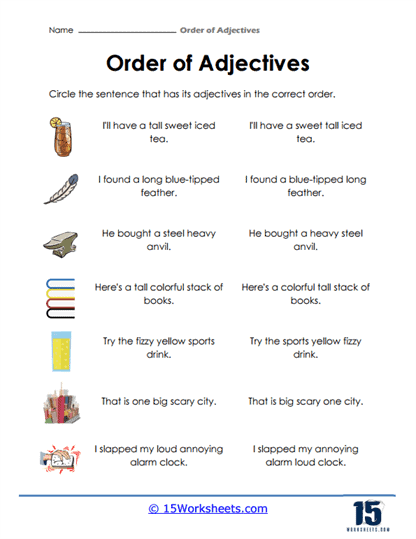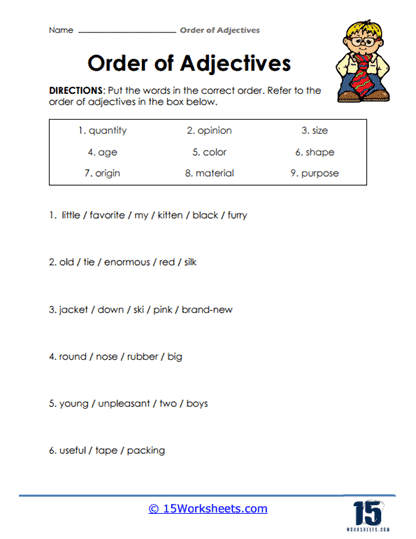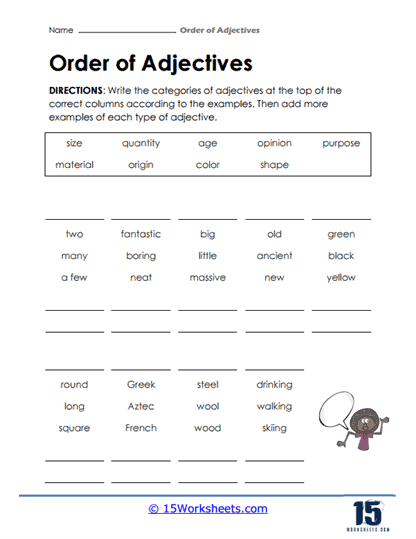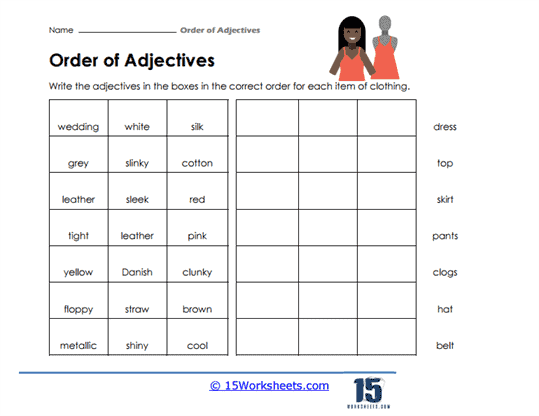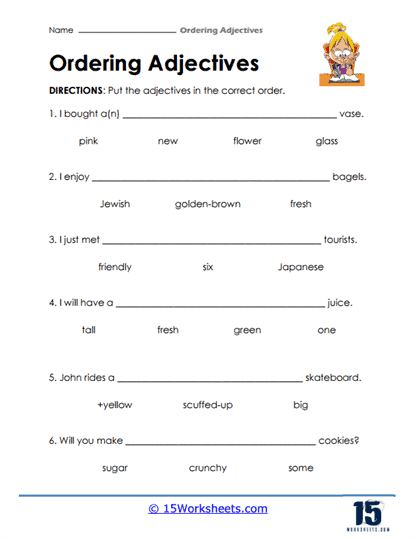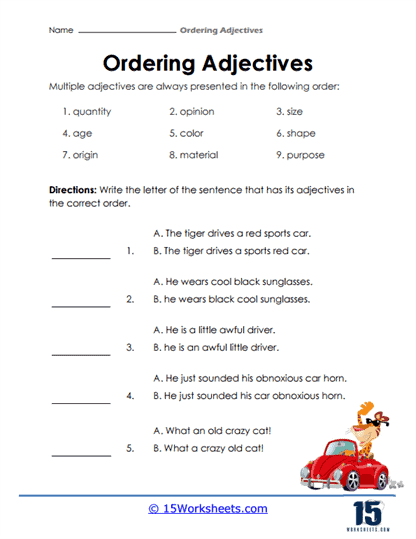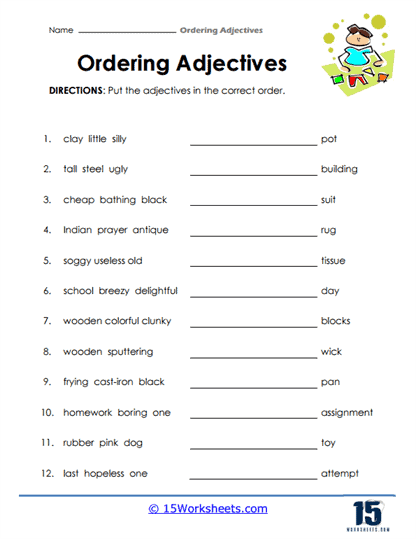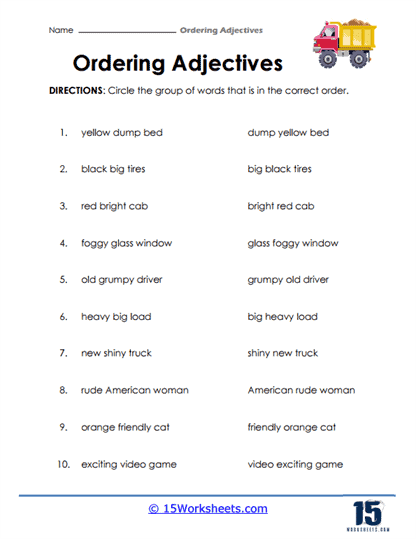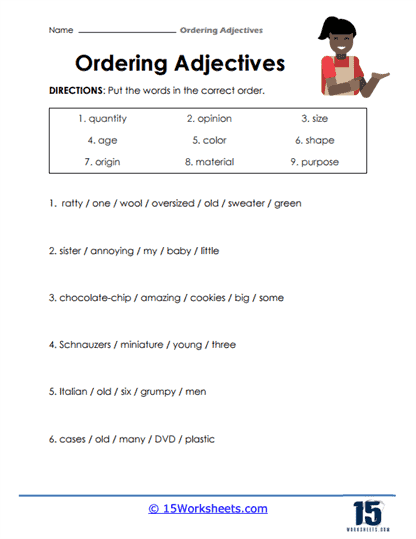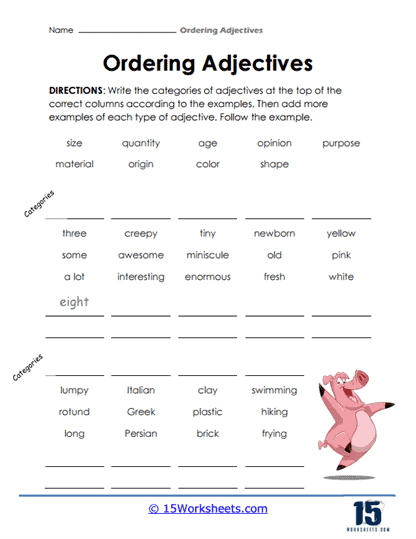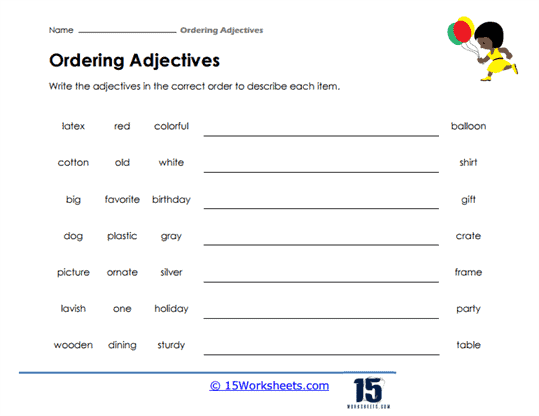Order of Adjectives Worksheets
All About These 15 Worksheets
These worksheets will help students understand and master the proper arrangement and order in which adjectives should be used in a sentence. This can help make young writers have much greater impact with their written language. Adjectives are words that describe or modify nouns, and the order in which they appear can affect the meaning and clarity of a sentence.
These worksheets usually cover various aspects of adjective order, including identifying and using the correct order of adjectives in a sentence, understanding the categories of adjectives, and learning the exceptions to the typical order.
By completing these worksheets, students will:
- Identify when the adjectives in a sentence is in the correct order;
- Make their own sentences with its adjectives in the correct order;
- And understand the categories of adjectives.
The worksheets may include fill-in-the-blank exercises, sentence rewrites, and multiple-choice questions that challenge students to apply their knowledge of adjective order in various contexts. After accomplishing these worksheets, students should be able to confidently use the correct order of adjectives in their writing and speaking, leading to improved clarity and accuracy.
How To Remember Order of Adjectives?
The order in which adjectives are employed in a sentence is known as adjectival order. Typically, they go as follows: A new red Swiss army blade, which includes age, hue, source, and intended use. Other descriptors that we use before the age are available. These are generic descriptors of the noun’s size, shape, and perception. Although we can frequently modify the order of these adjectives, we usually start with the most significant.
The adjectives are frequently in a specific order when more than one adjective precedes a noun. Typically, adjectives that express ideas or attitudes—such as “amazing”—come before more objective, factual ones. Adjectives combined with the second-to-last adjective are typically joined to the last adjective by and when more than one adjective follows a verb such as be (a linking verb): Always a cozy and pleasant place, home. Now it’s depressing, gloomy, and chilly. And is less frequent when a noun is preceded by more than one adjective (e.g. a warm, welcoming place). However, when there are two or more adjectives of the same kind or when the adjectives describe various aspects of the same item, we can use and: It was a green and blue shirt.
What is the Order of Adjectives?
One of the many unspoken norms and conventions that native and proficient English speakers carry about in their thoughts is the sequence in which adjectives are used. This is only one of several peculiarities that can make learning English difficult.
Adjectives can be used in two separate areas in both written and spoken language. As in Blanca is a cute cat. We usually put adjectives right before the nouns they modify. A connecting verb can also be followed by an adjective, as in Blanca is adorable. When we simply use one adjective, things become quite straightforward in any situation.
But what if we wish to describe the same word using many adjectives? So you better fasten your seatbelt because this linguistic trip is going to get rough. I bought seven delicious red apples, which sounds far better to a native English speaker than I bought seven delicious red apples.
It’s interesting to note that a speaker is likely to pronounce the first line without even thinking about the proper placement of the adjectives. For many English speakers, using adjectives in the “proper” sequence makes a statement “sound right,” thus they instinctively employ it.
There is logic to the craziness, though, and most grammar materials agree on a specific adjective order. Typically, adjectives are divided into several categories, and each category has a specific position in the adjective hierarchy.
Coordinate and Cumulative Adjectives
Adjectives may or may not employ a comma when placed before nouns, depending on whether they are cumulative or coordinate adjectives. In general, if two or more adjectives fall under the same category, they are regarded as coordinate adjectives (more on this in a bit). For instance, the terms hilarious and smart can both be employed to convey a point of view. As a result, they would be regarded as coordinate adjectives. When used in conjunction with a noun, coordinate adjectives are separated by a comma or commas and can be used in any sequence.
Although the sequence shown in the chart is a broad rule, the actual ordering of adjectives is somewhat varied. The majority view is always dominant, while the rest are less fixed. Adjectives are positioned in relation to the nouns they modify along a continuum, with what the speaker perceives as being objectively closer to the noun and what the speaker perceives as being intrinsic to the item further away. The issue of collocation is another; we often place collocating adjectives closer.


